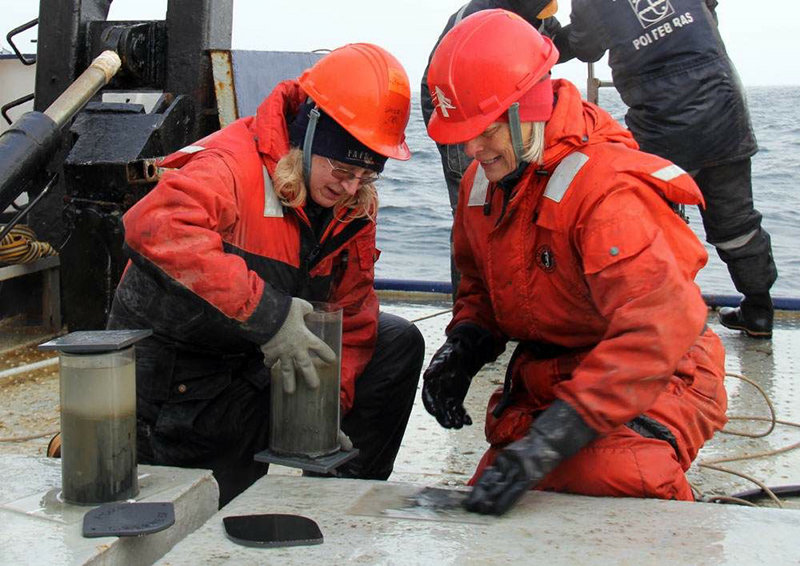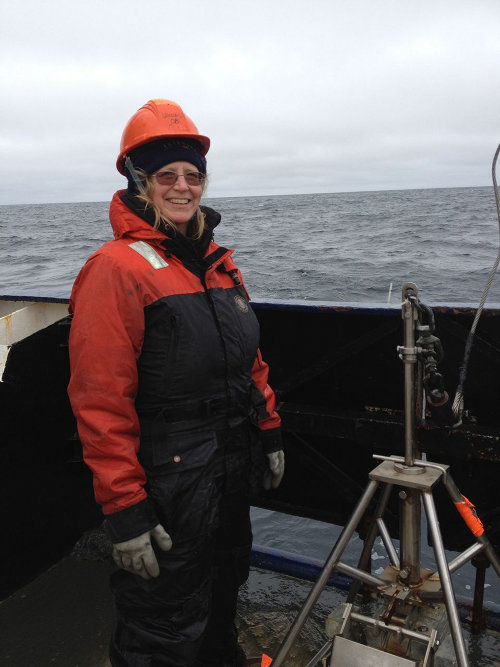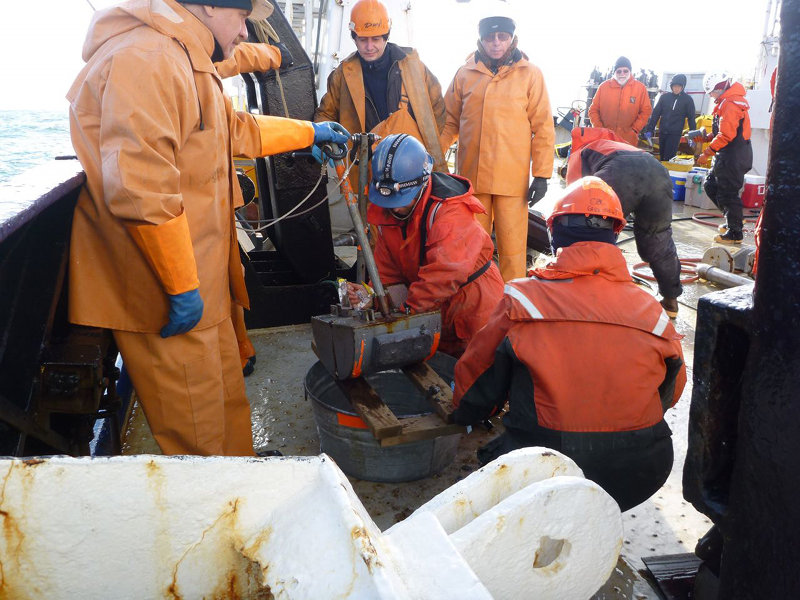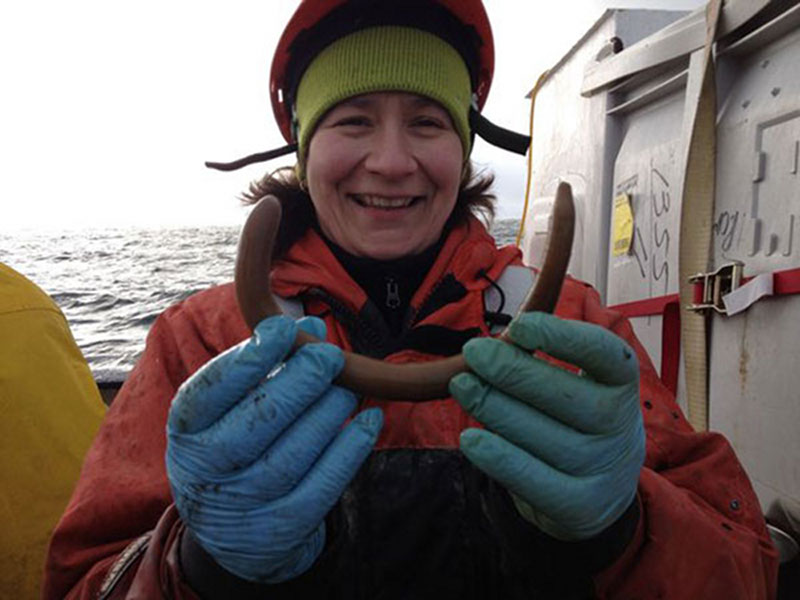
By Jackie M. Grebmeier,
Lee W. Cooper,
Monika Kedra - Chesapeake Biological Laboratory, University of Maryland Center for Environmental Science,
and Betty Carvellas - Teacher Advisory Council – The National Academies
September 13, 2012

Jackie Grebmeier and Betty Carvellas with sediment samples. Image courtesy of Aleksey Ostrovskiy, 2012 RUSALCA Expedition, RAS-NOAA. Download larger version (jpg, 325 KB).
The objectives of our benthic program are to evaluate macroinfaunal abundance and biomass of animals living within the sediments and their relationship to environmental variables within the Russian-American Long-term Census of the Arctic (RUSALCA) study area.

Jackie Grebmeier on deck. Image courtesy of Kate Stafford, 2012 RUSALCA Expedition, RAS-NOAA. Download larger version (jpg, 328 KB).
We are also collecting data from both the water column and sediments for chemical and biological evaluation. We collect water from the CTD for land-based measurements of oxygen-18 levels as a water mass tracer. We collect sediments for chlorophyll content, total organic carbon/nitrogen content, sediment grain size, and radioisotopes to determine the quantity and quality of organic matter reaching the surface sediments and sedimentation accumulation rates within the sediments.
Macroifaunal animals and sediments are collected via multiple deployments of a 0.1 m2 van Veen grab that are then sieved through 1 millimeter screens to collect the animals for preservation and post-cruise identification in the laboratory at Chesapeake Biological Laboratory. The infauna will be identified, counted, and weighed, then subsequently evaluated to determine faunal community structure, abundance, and biomass levels.

Bodhil Blum scoops a bit of sediment from a grab sample. Image courtesy of Aleksey Ostrovskiy, 2012 RUSALCA Expedition, RAS-NOAA. Download larger version (jpg, 562 KB).
We are also collecting sediment cores for sediment community oxygen consumption that is an indicator of carbon supply to the benthos. Although we collected 10 stations for these experiments in 2009, due to rough weather, we have only successfully collected cores at 4 stations in the Herald canyon area during RUSALCA 2012. With these two sampling periods, the data indicate the highest level of carbon export to the benthos occurs in the southeast Chukchi Sea “hotspot” sites where we also have high levels of bivalves and polychaetes, common food for walrus. The Herald Canyon stations from RUSALCA 2009 and 2012 indicate a down-canyon decline in carbon export, with the highest values at the upper area near Wrangell Island, with decreasing values at deeper sites.

Monica Kedra with a freshly collected sipunculid. Image courtesy of Kate Stafford, 2012 RUSALCA Expedition, RAS-NOAA. Download image (jpg, 78 KB).
Many sipunculid worms were found at some shelf and Herald Canyon stations that are also food for walrus. Dr. Monika Kedra has a keen interest in sipunculid taxonomy, diversity and their relation to environmental parameters. She is undertaking studies of the population dynamics of sipunculids and will use stable isotopic measurements to evaluate food web dynamics of these organisms that mix the sediments they live in.
Betty Carvellas, a retired school teach from Colchester, Vermont, has been interviewing all the science personnel and many members of the ship staff during the course of the cruise when not assisting out on the deck with our project. Betty also sailed on RUSALCA 2009 and you can read about her adventures on the Polartrec site where her journals ![]() are posted and archived.
are posted and archived.